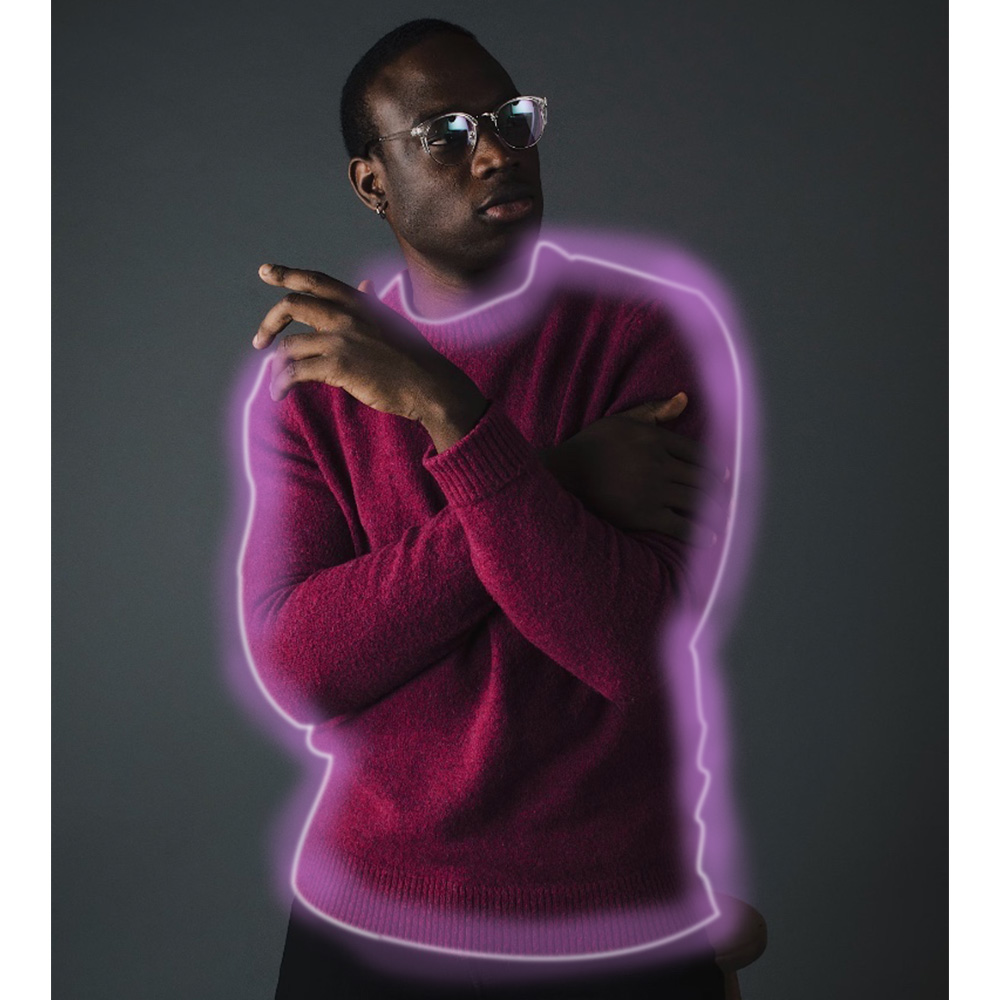252DWeb Development 10ImranC100853@wpga.ca-NHL
Imran’s Portfolio

This is a picture of a moose, with a landscape in the backround, the photo was altered to make the antlers glow, and the backround brightness was lowered to emphasize the green glow.

The photo was originally a side portrait of a woman with a plain backround, a picture of a starry night was inserted to the outline of the womans face/neck to provide a portal effect.

The photo started off as a stylish portrait of a man in a maroon sweater. The outline is a pink pen, with medium thickness. When gaussian blur is applied, it makes the pen have this glow effect.
Music Projects:
NEWS COMMENTARIES
Microsoft’s Recall Feature Is Even More Hackable Than You Thought
A new discovery that the AI-enabled feature’s historical data can be accessed even by hackers without administrator privileges only contributes to the growing sense that the feature is a “dumpster fire.”
Microsoft CEO Satya Nadella speaks on stage
Photograph: Justin Sullivan/Getty Images
Microsoft’s CEO Satya Nadella has hailed the company’s new Recall feature, which stores a history of your computer desktop and makes it available to AI for analysis, as “photographic memory” for your PC. Within the cybersecurity community, meanwhile, the notion of a tool that silently takes a screenshot of your desktop every five seconds has been hailed as a hacker’s dream come true and the worst product idea in recent memory.
Now, security researchers have pointed out that even the one remaining security safeguard meant to protect that feature from exploitation can be trivially defeated.
Since Recall was first announced last month, the cybersecurity world has pointed out that if a hacker can install malicious software to gain a foothold on a target machine with the feature enabled, they can quickly gain access to the user’s entire history stored by the function. The only barrier, it seemed, to that high-resolution view of a victim’s entire life at the keyboard was that accessing Recall’s data required administrator privileges on a user’s machine. That meant malware without that higher-level privilege would trigger a permission pop-up, allowing users to prevent access, and that malware would also likely be blocked by default from accessing the data on most corporate machines.
Then on Wednesday, James Forshaw, a researcher with Google’s Project Zero vulnerability research team, published an update to a blog post pointing out that he had found methods for accessing Recall data without administrator privileges—essentially stripping away even that last fig leaf of protection. “No admin required ;-)” the post concluded.
“Damn,” Forshaw added on Mastodon. “I really thought the Recall database security would at least be, you know, secure.”
Forshaw’s blog post described two different techniques to bypass the administrator privilege requirement, both of which exploit ways of defeating a basic security function in Windows known as access control lists that determine which elements on a computer require which privileges to read and alter. One of Forshaw’s methods exploits an exception to those control lists, temporarily impersonating a program on Windows machines called AIXHost.exe that can access even restricted databases. Another is even simpler: Forshaw points out that because the Recall data stored on a machine is considered to belong to the user, a hacker with the same privileges as the user could simply rewrite the access control lists on a target machine to grant themselves access to the full database.
That second, simpler bypass technique “is just mindblowing, to be honest,” says Alex Hagenah, a cybersecurity strategist and ethical hacker. Hagenah recently built a proof-of-concept hacker tool called TotalRecall designed to show that someone who gained access to a victim’s machine with Recall could immediately siphon out all the user’s history recorded by the feature. Hagenah’s tool, however, still required that hackers find another way to gain administrator privileges through a so-called “privilege escalation” technique before his tool would work.
With Forshaw’s technique, “you don’t need any privilege escalation, no pop-up, nothing,” says Hagenah. “This would make sense to implement in the tool for a bad guy.”
The article by Andy Greenberg in WIRED highlights critical security vulnerabilities in Microsoft’s new Recall feature, which is designed to capture and store screenshots of a user’s desktop every five seconds for AI analysis. Despite CEO Satya Nadella’s promotion of this feature as a “photographic memory” for PCs, the cybersecurity community views it as a significant security risk.
Key points from the article include:
- Initial Security Concerns: From the outset, experts warned that if malware could gain a foothold on a machine with Recall enabled, it could access the entire history stored by this feature. Initially, this was mitigated by the requirement for administrator privileges to access the data.
- Bypassing Admin Privileges: James Forshaw from Google’s Project Zero revealed methods to bypass the need for admin privileges, effectively removing the last security safeguard. These techniques exploit weaknesses in Windows’ access control lists, allowing hackers to access Recall data without elevated permissions.
- Implications of the Vulnerability: The discovery simplifies the exploitation process, making it possible for hackers to retrieve all stored data without triggering security alerts or needing advanced privileges. This revelation has led to increased criticism, with experts like Alex Hagenah and Dave Aitel expressing alarm over the ease with which this data can be compromised.
- Industry Reaction: Cybersecurity professionals argue that Microsoft’s security teams should have identified these vulnerabilities before the feature’s release. The consensus is that Recall, as it stands, poses a substantial threat to user privacy and enterprise security.
- Microsoft’s Response: At the time of the article, Microsoft had not responded to the findings. The feature is still set to be integrated into compatible Copilot+ PCs by default, raising further concerns about the potential for widespread exploitation.
In summary, the article underscores the urgent need for Microsoft to address these security flaws before fully rolling out the Recall feature. The current vulnerabilities render it a “security dumpster fire,” posing severe risks to both individual and enterprise users.
Jeff Yang’s article on CNN, “Apple’s Worldwide Developer Conference (WWDC) is just days away,” captures the high stakes and immense pressure facing Apple as it approaches another pivotal moment in its storied history. As the world waits with bated breath for the latest announcements from the tech giant, it’s clear that Apple stands at a crossroads, grappling with both past glories and present challenges.
Apple’s historical ability to reshape consumer expectations and habits is well-documented. From the iPod to the iPhone, the company has consistently managed to deliver products that not only succeed commercially but also redefine market standards. However, as Yang astutely observes, recent years have seen Apple struggling to recapture that same level of transformative impact. The closure of Project Titan and the lukewarm reception of the Vision Pro underscore the difficulties the company faces in maintaining its innovative edge.
The backdrop to this year’s WWDC is particularly fraught. Apple’s declining sales in China, legal battles over patent infringements, and allegations of anticompetitive practices threaten to overshadow the event. Despite these challenges, Apple’s stock remains robust, buoyed by the continued success of the iPhone and its thriving services business. This paradox of facing significant hurdles while still maintaining market dominance speaks to the complex nature of Apple’s current situation.
Yang highlights the speculative focus on Apple’s potential moves in artificial intelligence. Partnering with OpenAI, Google, or Anthropic would indeed be uncharacteristic for Apple, which typically favors in-house development. The rumored AI features—transcribing voice memos, summarizing chats, retouching photos, and creating custom emojis—while useful, lack the groundbreaking appeal that could redefine the market. This perception of Apple playing catch-up rather than leading innovation is a stark contrast to its previous era under Steve Jobs.
The article poignantly touches on Apple’s struggle to match the cultural impact of its earlier products. The Vision Pro, despite its advanced features, failed to resonate widely due to a lack of clear, compelling use cases that speak directly to consumer needs. This issue was vividly illustrated in the disconnection between the futuristic demo and the practical desires of potential users.
Yang’s comparison to past triumphs, such as the iPod’s simple yet powerful promise of “1,000 songs in your pocket,” underscores the challenge Apple faces: finding that simple, resonant message that captures the imagination of consumers. The iPod revolutionized music consumption not just through technology, but by meeting a fundamental desire in a straightforward way. The Vision Pro, and indeed many of Apple’s recent innovations, have yet to find that clear, compelling narrative.
Yet, it would be premature to count Apple out. The company’s unique position as a lifestyle brand and its history of redefining consumer expectations give it a foundation upon which to build. The mockery of EyeSight, a feature intended to integrate technology more seamlessly into social interactions, reflects the risks inherent in bold innovation. But it also highlights Apple’s willingness to address real user concerns, a trait that has been central to its past successes.
In conclusion, Apple’s upcoming WWDC is more than just another product launch; it’s a test of the company’s ability to navigate an increasingly complex technological landscape and recapture its innovative spirit. The stakes are high, and the path forward is fraught with challenges. But if Apple can channel the bold, user-centric innovation that defined its early years, it may yet reclaim its place as the arbiter of technological and cultural transformation. This WWDC could be a crucial step in that journey, and the world will be watching closely to see if Apple can once again think different.
Apple’s Worldwide Developer Conference (WWDC) is just days away, and as usual, the technorati are buzzing about what might be unveiled at the company’s annual bleeding-edge technology event: An updated iPhone operating system with a heavy AI focus? New Mac hardware? A “One More Thing” wildcard?

Jeff Yang CNN
Naturally, Apple has locked down the details of the revelations it plans on releasing on Monday tighter than Fort Knox. But the sense among many observers is that whatever they are, they’d better be good. Because since the beginning of the year, there have been signs that the fruit factory’s future prospects could be souring.
The company’s sales in China dropped dramatically earlier this year, as the iPhone was met with strong competition from local offerings like the Huawei Mate, forcing Apple to offer aggressive discounts there. In 2023, the International Trade Commission ruled that Apple stepped on medical equipment manufacturer Masimo’s existing patents in building a pulse oximeter into its newest Apple Watches, leading the company to halt sales of those versions of its wearable in December, until the feature could be temporarily removed, pending appeal of the decision. And in March, the Justice Department filed a lawsuit against Apple, alleging that the company engages in a broad range of anticompetitive practices related to its dominance in the US smartphone market — litigation that threatens the very core of the company’s business. (Apple denied the allegations.)
Of course, by most measures, the gadget maker is still a gargantuan global success. After tumbling earlier in the year, the company’s stock now stands just short of its all-time high, bringing its valuation back to about $3 trillion dollars (just six years after it became the world’s first trillion-dollar company). Juicing Apple’s growth? The iPhone, of course, which commands a 17% share of the global smartphone market as measured by units sold, but a staggering 43% of global smartphone revenues. And Apple’s services business, mostly defined by sales of apps and content, continues to thrive, and is projected to make up a quarter of the company’s total revenues by 2025.
A tech company’s success isn’t just measured by the products it has on the market in the present however, but its ability to innovate and stay ahead of the curve. That means Apple will be challenged to come up with some announcements that feel like they recapture some of the company’s golden-age glory.

Related article Opinion: The risks of AI could be catastrophic. We should empower company workers to warn us
Early focus has been on what Apple is planning on doing with artificial intelligence. Some rumors suggest that Apple is partnering with OpenAI (and perhaps Google and AI company Anthropic as well), which might be an unusual move in a number of respects — running counter to the company’s preferences to keep its most vital technologies in house, while feeling at best like a catch-up move rather than a revolutionary breakthrough.
Others have pointed to Apple’s recent release of OpenELM, a set of four scaled-down open-source language models, as an indicator of the company going in a different direction: delivering efficient AI features “on handset” without the need to call on servers in the cloud.
But the new capabilities being discussed as a result hardly feel earth-shattering: Transcribing voice memos? Summarizing chats and websites? Retouching photos? Uh…custom emojis? None of these are likely to have the impact of Open AI’s demo of GPT-4o, its voice-enabled latest large language model.
The reality is that for all of Apple’s profitability and streamlined commercial prowess under Tim Cook, it has yet to recapture the unique ability that it had under cofounder and iconic CEO Steve Jobs to control the cultural narrative — to make people feel that the company is still capable of changing the way people think about technology and how it intersects with their lives.
It’s a tougher argument to make now, given that Apple’s most hotly anticipated bets on its own innovation have either crashed and burned. In February, the company finally shut down Project Titan, the codename for its decade-long, $10 billion internal initiative to design an Apple-branded electric car. And Apple’s unveiling last year of its mixed reality “headtop” computer, the Vision Pro, generated initial buzz with its undoubtedly groundbreaking feature set and performance specs, but failed to catch immediate fire with consumers upon release.

Apple CEO Tim Cook introduces Apple Vision Pro, a mixed reality headset, at Apple Park in Cupertino, CA, on June 5, 2023.Brooks Kraft/Apple Inc.
The seeds of Vision Pro’s problem were visible in the WWDC unveiling itself. The dazzling computer-simulated demo, which showed visor-wearing users meditating in front of giant virtual mandalas, wandering around floating windows scattered across different rooms of their homes, and doing work while seated, surrounded by a swarm of apps, felt disconnected from things that people actually wanted to do.
By contrast, when Jobs pulled the curtains back on the first iPod in 2001, he held it up and said a single phrase that summed up its user promise: “1,000 songs, and it goes right in my pocket.” All the music you love, when you want it, at your fingertips. The iPod was dragged by some as overpriced and unnecessary, but the core benefit it provided was irresistible to actual consumers, and it brought an entirely new category of portable consumer electronics into the mainstream as a result.
What’s the songs-in-your-pocket equivalent for Vision Pro? Spreadsheets on your face? That’s certainly not a benefit capable of luring any but the earliest of adopters into spending $3,500 for the privilege of “spatial computing.” No one should count Vision Pro out — the iPad, Apple Watch and even the original iPhone all needed a little time and iteration to find their footing. But so far, if Apple is looking to reclaim its real-world relevance, Vision Pro isn’t it — yet. The device’s power consumption requires it to be tethered to an awkward waist-mounted external battery that gives it just a few hours of unplugged usage. Its most distinctive feature, EyeSight, which uses an outward-facing screen to present a ghostly image of the wearer’s eyes to the world in an attempt to remove the sense of the gadget as a barrier between users and the world around them, has been the subject of much mockery.
Still, Apple occupies a unique strategic space: The world sees it as one of the few true lifestyle brands in consumer tech, with products whose impact isn’t expressed in benchmarks, but in values shifts and behavior modification. And that’s because the seeds of Apple’s extraordinary success lie in the company’s ability to motivate people to reimagine their worlds around their products.
While the 1998 all-in-one iMac specs fell short of comparable Intel hardware, its interior decor-savvy sensibility led people to use it as a living room computer that was flaunted rather than hidden behind partitions, in turn opening the door for ever-deeper integration of consumer computing devices into our media consumption, home control and family interactions.
A decade later, the MacBook Air, famously demo’d in 2008 as the world’s thinnest notebook, thin enough to fit in a standard manila envelope, became the first laptop to really feel like a fashion accessory — a “purse PC,” if you will. Even the original iPhone, introduced the year before, forced users to re-envision their relationship with both handheld devices and screen-based communications, taking away most physical buttons and inviting people to tap icons on a minimalist touchscreen instead. The end result has been transformative.
Get our free weekly newsletter
- Sign up for CNN Opinion’s newsletter.
- Join us on Twitter and Facebook
What’s important to note is that all of these cultural revolutions are fundamentally rooted in design choices, not technological breakthroughs — changes in form factor and user interface based on extraordinary insights into how people want to interact with their digital stuff and with one another.
In the 13 years since Cook took the reins, and especially in the half decade since Jony Ive, former chief design director, left Apple, the company hasn’t yet managed to deliver the same kind of dent in the human universe. But in order to make cosmic dents, you have to take big swings. And while this may sound paradoxical, the thing that should make Apple fans feel optimistic that the company can get its mojo back is also what generated widespread derision at WWDC in 2023. EyeSight in its present form is goofy and creepy — but it’s an authentic attempt to address one of the critical concerns that people have about head-mounted devices.
Leaning into unexpected methods to socially integrate new technology is an encouraging echo of Jobs and Ive’s native focus on the intersection of technology and the liberal arts, of computing and humanity, even when their solutions fall short. Let’s hope that at this WWDC, the company defiantly ignores last year’s laughter and continues to look, and think, different.
252DWeb Development 10ImranC100853@wpga.ca
Welcome to WordPress. This is your first post. Edit or delete it, then start writing!


